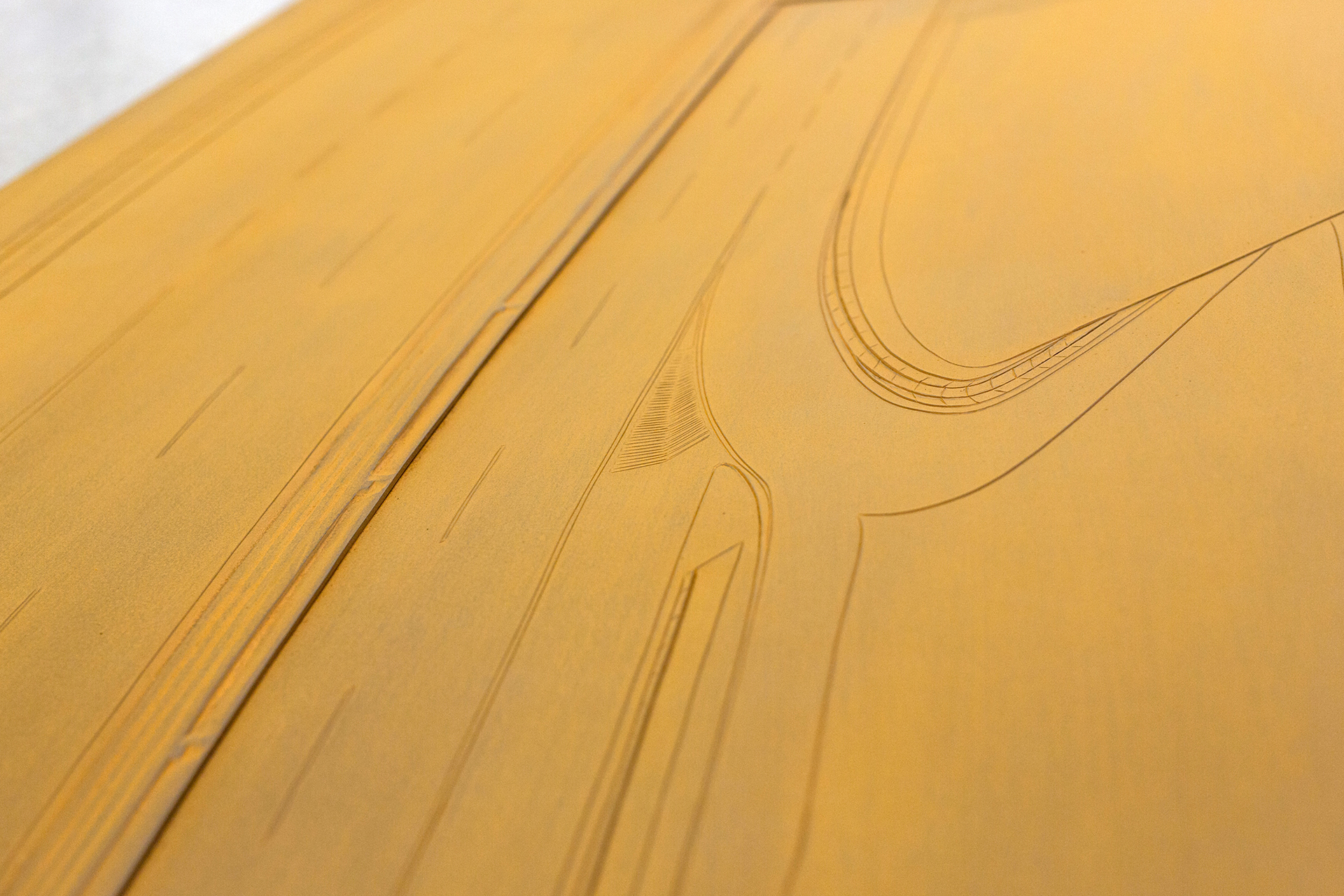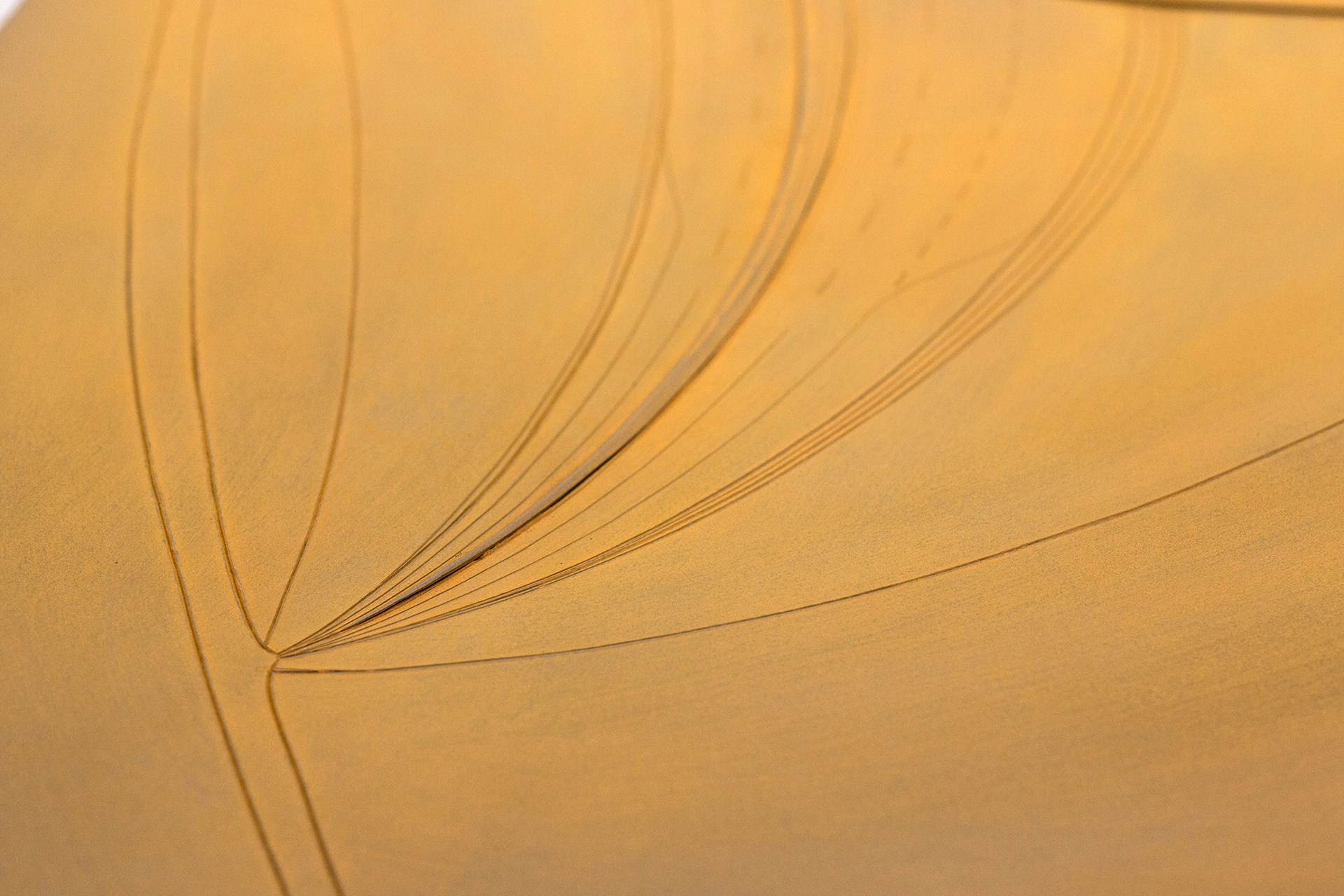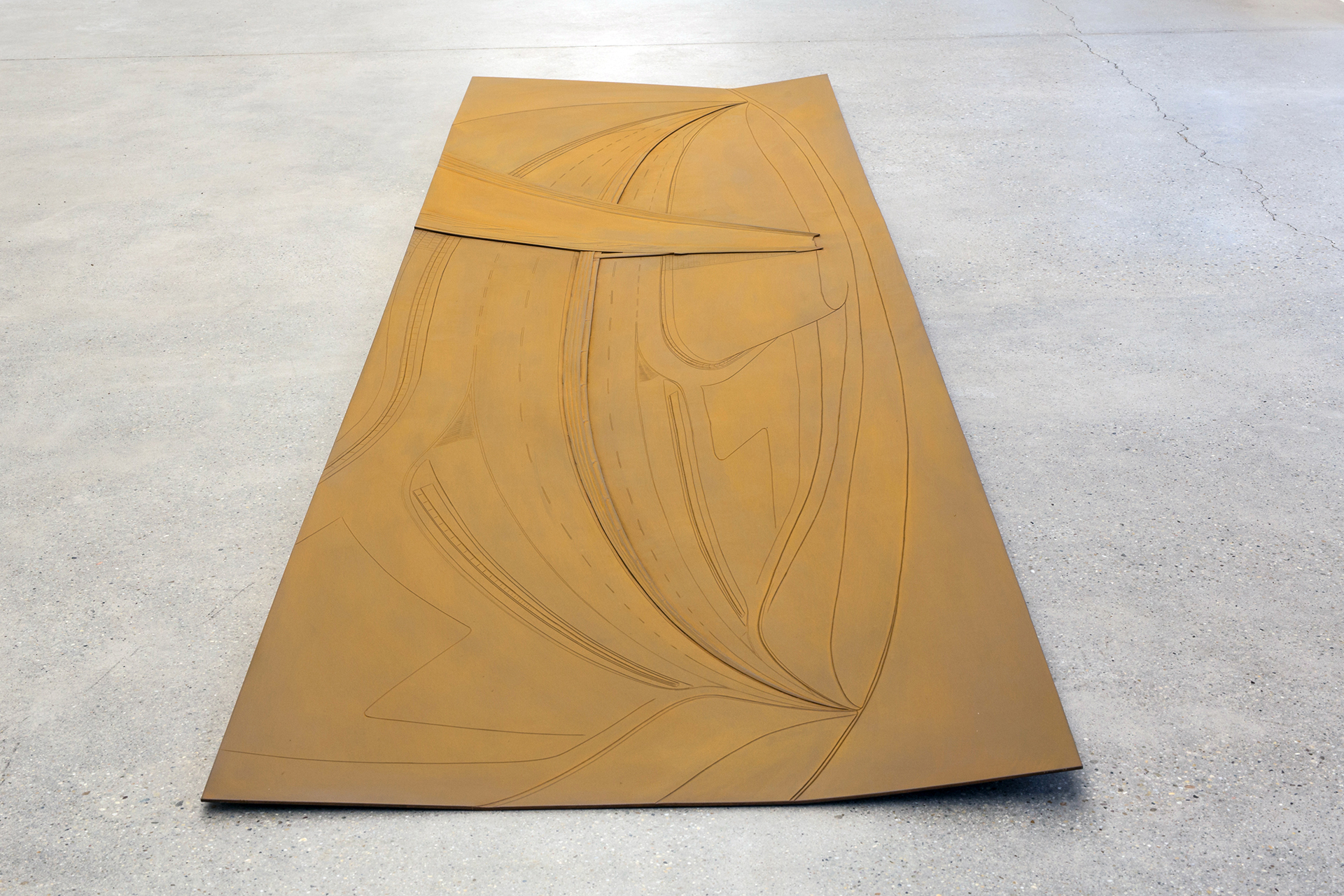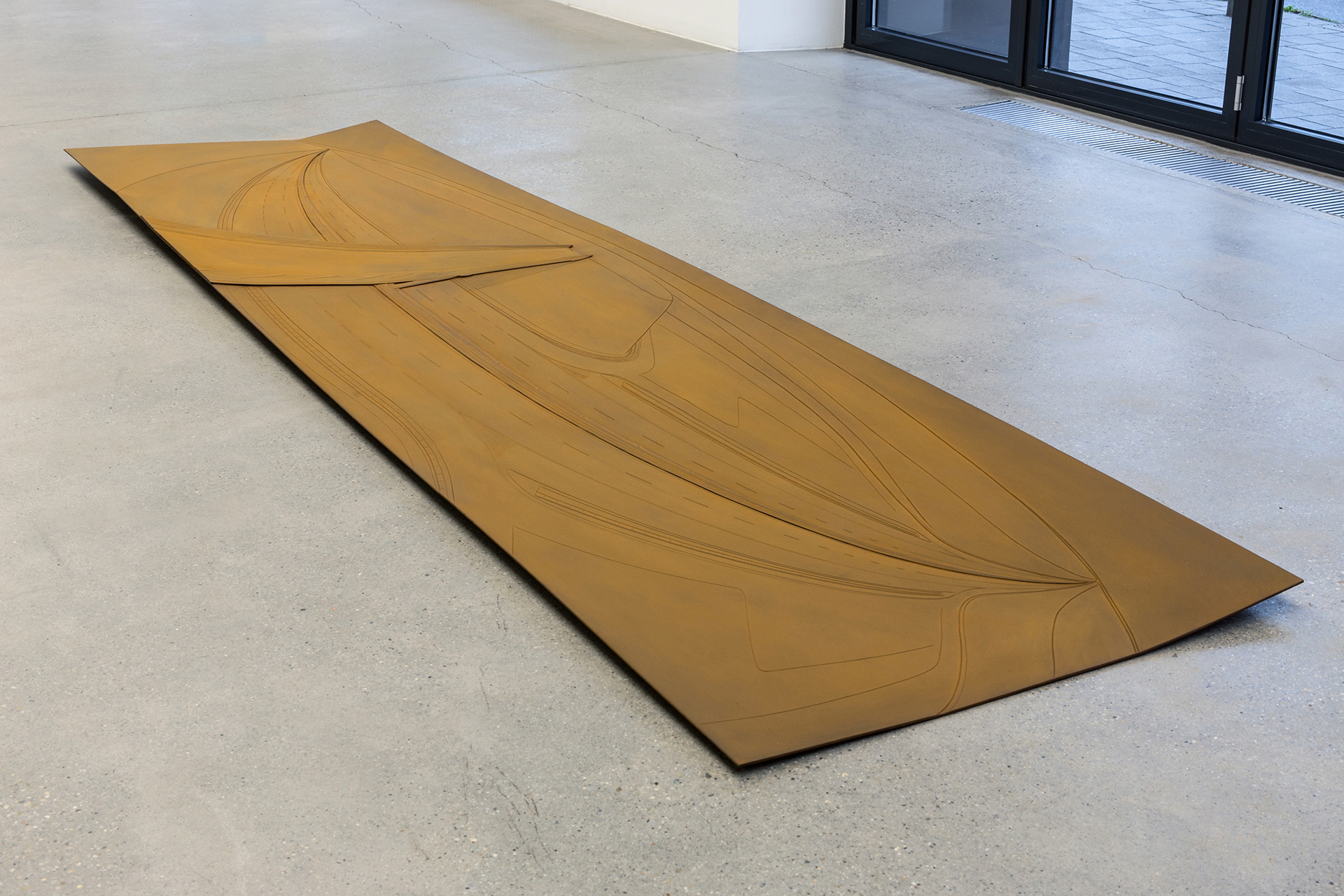Landscape II.
YEAR: 2010
SIZE: 350×88×12cm
TECHNIQUE: Graven steel sheet
“The built, or urban, landscape is the primary environment for 21st-century man, and consequently a central motif of contemporary art. As an overarching and complex metaphor, the city embodies a controversial and always changing scene of contemporary life, where everything unfolds from the subjective and identity-seeking personal narratives to broader issues of sociology, politics and culture. The way sculptor Marcell Németh (1982) relates to the cityscape is truly distinctive: his urban views, stylized and void of specifics, take the form of metal reliefs that rest on traditional grounds but employ a sculptural idiom that offers a broad reading of the art form’s rules.
The technique
Marcell Németh studied at the sculptor programme of the Hungarian University of Fine Arts between 2001–2007, in the class of Pál Kő. Though during his school years he experimented with such classical media as the painted terracotta (Space Sketches I–V, 2006), by 2007, the year when he graduated, he had found the material best suited to his needs: one of the most difficult substances to work with, the steel plate has remained key to his art.
The steel plate is both the support and building material of Marcell Németh’s works. Little is left to chance in the execution, because he prepares every composition with a one-to-one draft, as precise as any technical drawing. There are distinct layers in his works, the first of which he engraves like a goldsmith or etches like a printmaker, while the motifs of the second layer – mostly the elements of industrial or suburban sceneries – are cut out meticulously by hand or with laser, and are then welded on the support sheet. The last phase of the creative process, which is nonetheless the most important for the overall effect of the relief, is processing the surface, making it consistent. Since steel reacts differently to the various surface treatment substances, every procedure results in a different aesthetic effect. In a masterly way, Marcell Németh makes this physical trait a component of his works’ final look. The controlled corrosion of surfaces treated with acid (Landscape II, 2010; Drop-rings, 2013) results in intensely warm brownish reds and ochres that invest the work with the age of an archaeological find. Thanks to the unevenness of the steel sheet, steel shot blasting creates both radiant-glossy and grey-matte patches, which add up to a swirling texture; Németh uses this lyrical effect to model the sky (Close Angle II, 2013). Sandblasting, in turn, produces a coarse, dull effect. The artist tends to use a combination of these surface treatments and of the textures of the different optical effects that these create, which, alongside the representation of motifs from steep viewing angles and distorted perspectives, are responsible for trompe l’oeil effects (External Space I–III, 2015).
The ingenious techniques – many of them the variations on industrial technologies –, which Németh developed in the course of years, have all come to serve his artistic concept.
Viewed from a technical angle, Marcell Németh’s reliefs, which balance on the line between two and three dimensions, can be considered sculptural experiments that are planar like paintings, are suggestive of the spatiality of sculptures and the characteristics of the printmaker’s mindset, and finally become three-dimensional artworks thanks to the fourth criterion, appropriate light and illumination.“
Contemporary Art From Hungary- 17 / 2018
Noémi Szabó


